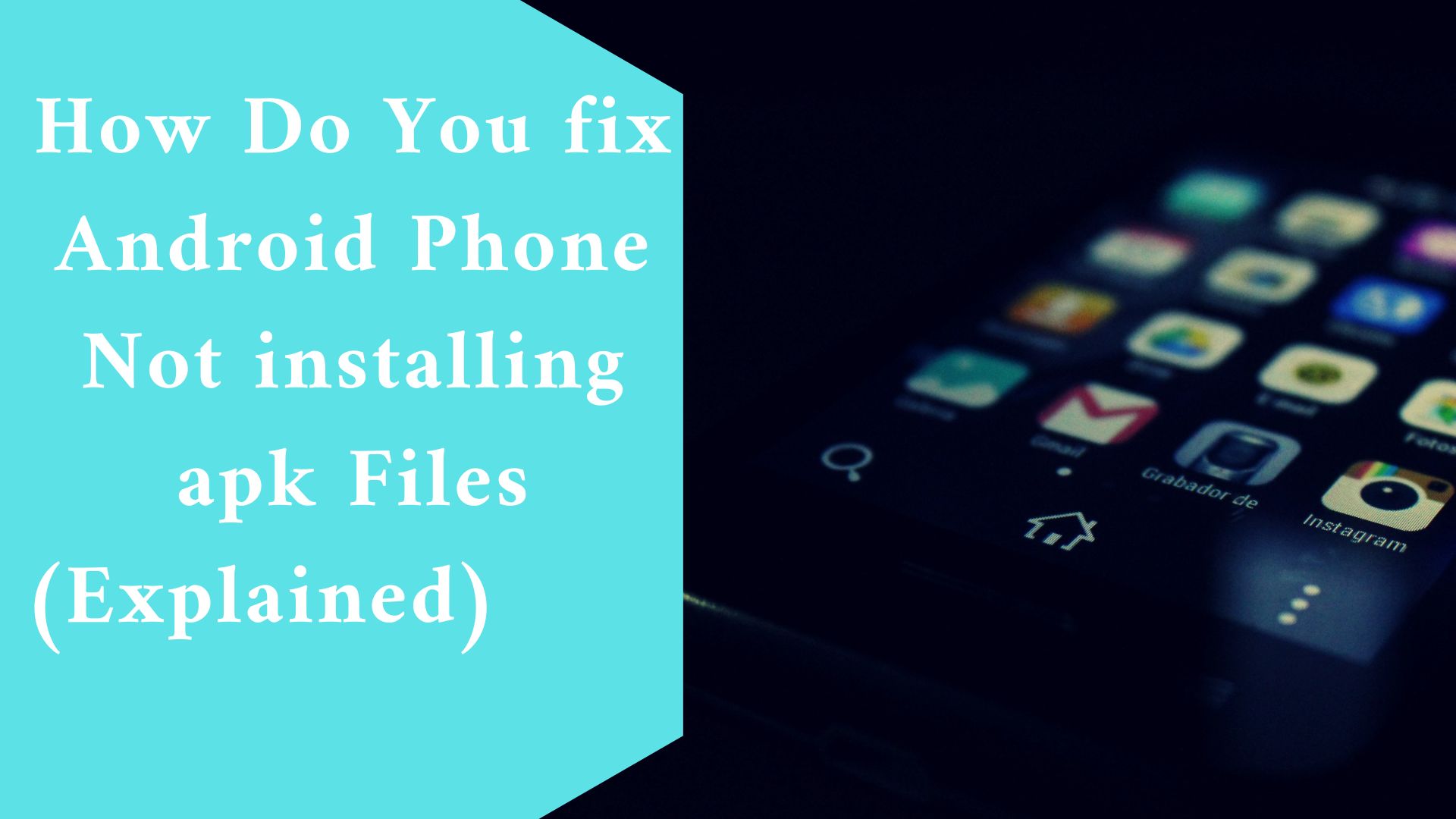Fix your Android phone that not installing apk files anymore in an easy step. The App is not installed problem, which happens when users try to sideload APK from external sources, is a rare yet annoying error (not Play Store).
This problem is uncommon because typical customers rarely install software from third-party sources, to begin with (even though APKs from the right sources are perfectly safe).
Those who do, however, appear to be unable to install APK files on their Android smartphones. Today, we’ll teach you how to fix it in a few easy steps.
How Do You fix Android phone not installing apk files
- Use an app to install bundles.
- Instead of updating, perform a clean install.
- Check that you have enough storage space.
- Enable Installation from Unknown Sources.
- Check that the APK file isn’t corrupted or missing.
Why won’t an APK install on Android? First, ensure that the APK version you want to install is compatible with your Android version. Also, before installing an APK, uninstall the Play Store version of the program.
Check the storage space as well as the permission to install apps from unknown sources. In addition, certain APKs arrive in bundles that require a particular installer to sideload. More information is provided below.
-
Use an app to install bundles.
Not all APKs are packaged in a way that allows them to be installed using the Android Package Installer.
APK Bundles, also known as Split APKs, are APKs that combine numerous merged APKs into one.
Many apps come in bundles, and you’ll need an installer for them, such as Split APKs Installer.
APK aggregators, such as APK Mirror, also make installers accessible for download on their websites (APK Mirror Installer is also available on the Store, here).
Some of them are dangerous, and we do not advocate downloading them unless you are certain of their origin.
By glancing at the extension name, you should be able to tell Split APKs apart from conventional APKs. Non-regular APK extensions include APKM, XAPK, and APKS.
If you obtain an app that has these extensions and wish to sideload it, utilize the aforementioned programs that can install them.
If you’re positive that the APK is, well, just a regular one, but you still can’t install it on your Android, run it via the Split APKs installer. That ought to work.
Related video here ????????????????
-
Instead of updating, perform a clean install.
Updating apps through APK is usually a wonderful way to either roll back to a version that is still supported but not optimally working, or to download a newer one without having to wait for the official Play Store release. However, it does not always function as planned.
As a result, rather than updating an app (which overwrites the version), we recommend uninstalling the original software and performing a clean install.
Of course, this does not apply to system apps that cannot be uninstalled. Some Android skins cannot even be updated using the stock package installer.
To restore them, you need presumably uninstall updates and then sideload an APK. So, wherever possible, avoid updating and downgrading an app and instead perform a clean install using an APK.
-
Check that you have enough storage space.
Aside from a variety of other factors, a shortage of storage space is unlikely to be at the top of the list.
However, it is still a possibility. As a result, make sure you have enough storage space.
If you do, please go to the next step. If you don’t, you can make some space by following the steps below.
- For media assets such as music, photographs, and movies, use an SD card (if supported). It can also be utilized for apps, however, this may present extra complications.
- Google Images’ unlimited storage is still available for free, so make the most of it by backing up your photos and videos. Even with the low original quality, 15GB of free storage is sufficient for a large number of photos.
- Upload additional files using Google Drive or your preferred third-party cloud service. If there’s no reason to preserve them for quick access, delete them from internal storage.
- Remove data from apps. It will not restore your settings or login credentials, but it will provide you with some storage space.
- Uninstall unused applications. If you don’t utilize it at least once a month, you probably don’t need it. You can always download it again if the need arises.
-
Enable Installation from Unknown Sources.

How Do You fix Android Phone Not installing apk Files (Explained)
Let us now turn our attention to APK difficulties. There should be no issues with APK installation.
It may be risky because certain apps from third-party sources can get you into trouble, but we’re confident that the majority of them are as trustworthy as those from the Play Store. You must, however, accept third-party installation files.
Previous versions of Android had a single setting that enabled or disabled installation from unknown sources for all apps.
However, in recent Android revisions, the approach was shifted to an app-by-app basis. As a result, if your device is running Android 8 Oreo, go to Settings > Security > Unknown source and enable the installation.
If you’re using Android 12, for example, you’ll get the prompt while attempting to run an APK.
Make sure to allow permission and then hit Install. Alternatively (as shown in the screenshot below), go to Settings > Apps & notifications > Special app access > Install unknown apps and select all apps that have this permission.
-
Check that the APK file isn’t corrupted or missing.
As we discussed in this article about installing from unknown sources, wandering around looking for an APK can occasionally lead to issues.
Many websites provide unsafe altered programs. Furthermore, they are frequently corrupted and will not run, or if they do function, they are unstable. Changing the code will get you there.
Stick to APK Mirror or other similar websites that maintain the software in its original version.
They simply port and post it. They also verify that every program uploaded by contributors is in its original state.
All of this results in safe and stable apps that won’t give you installation difficulties or, except for bundles, ask you to download some dodgy installers to sideload them on your device.
Final thought
If you still can’t install APK files on your smartphone, your system is probably broken, and resetting it to factory settings should fix that.
And that’s the end of it today, thanks for reading through, kindly leave us a comment in our comment section below.

